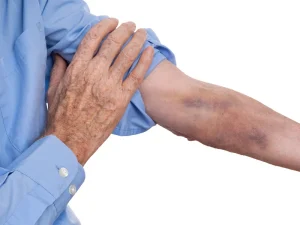
Purple Treatment Center’s men’s recovery programs is more than just a place to live; it’s a vibrant community where men are supported on their journey to overcome substance use disorder. At Purple, the philosophy is centered around the Active Recovery Lifestyle, which goes beyond the traditional approach to recovery. This lifestyle is about engaging with a community that understands the challenges and triumphs of the recovery process. It’s about building a life that’s not only free from substances but also full of potential, purpose, and fulfillment. Level 2 residences are characterized by a community-based environment supervised by a senior resident, house manager, or staff member.

Let Our Experience Build You Up
All recovery residences offer alcohol and illicit substance-free living environments and utilize a social model recovery approach. They are differentiated by the intensity of staffing, governance, and recovery support services. NARR Levels are informed by the American Society of Addiction Medicine (ASAM) categorization of different types of treatment and recovery programs, and the terms Levels and Types can be used interchangeably.
Recovery Residence vs. Halfway House: What You Need to Know
The mission of NARR is to support persons in recovery from addiction by improving their access to quality recovery residences through standards, support services, government and private sector collaboration, education, research, and advocacy. Recovery residences are important assets within a community and among recovery-oriented systems of services. Residences that meet and maintain the NARR Standard ensure that this resource continues as a viable asset for the people who need it.

Peer-Based Recovery Support

Oxford Houses are governed by a charter and rules that are agreed upon at the outset, but those are kept to a minimum and decisions are made democratically. For instance, house members vote on whether to allow a certain individual into the house. Filters to the left of the map allow you to search for the type of home you are looking for. We also lack tools necessary to provide a complete picture of the national recovery housing landscape. Susan B. Blacksher’s extensive career in substance abuse and recovery has left an indelible mark on the field. From hands-on service roles to leadership positions within the State Department of Alcohol and Drug Programs and CAARR, Susan’s work has pioneered services for underserved populations and shaped recovery service education.

What are recovery residences?

It is most often aligned or attached with a licensed treatment provider, and overseen by an appropriately credentialed and qualified management team. A series of studies on Oxford Houses suggest they promote a host of positive outcomes at substantially lower costs compared to standard continuing care after residential treatment. These outcomes include not only substantially better abstinence rates, but also increased rates of employment and lower rates of criminal recidivism. Also, among recovery residence members, more 12-step mutual-help participation and lower levels of drinking and drug use in one’s social network predict better substance use outcomes and lower likelihood of arrest over time. New Beginning Recovery Review A recovery residence refers to a supportive, shared living environment founded on peer support and connection to community services that promote a person’s active participation in their own recovery.
- While there are fundamental differences between the levels (discussed below), their basic purpose is all the same – to provide a substance-free environment where people can continue their recovery while relying on support from their peers.
- Dave Sheridan’s leadership of NARR reflects a deep commitment to advancing recovery housing standards and Fair Housing Rights.
- These recovery residences are commonly known as sober homes and are most often found in single-family residences.
- At Purple, we provide a range of services and programs designed to restore men through an active recovery lifestyle, leveraging the power of community and personal growth.
- However, most Level 1 RRs don’t provide onsite recovery services, with the possible exception of an optional 12-step recovery meeting held weekly at the home.
Why These Standards?
Established to set and maintain high standards for recovery residences, NARR’s goals include ensuring that individuals in recovery have access to safe and recovery-focused living environments that support their journey towards long-term recovery. NARR is a national organization with a unique two-tier organizational structure that combines national reach and influence with state-level knowledge and accountability. We operate in partnership with a network of state-level affiliate organizations which implement NARR’s standards and programs in their states.
- Level 1 recovery residences offer supportive housing in a community-based peer environment.
- Also, among recovery residence members, more 12-step mutual-help participation and lower levels of drinking and drug use in one’s social network predict better substance use outcomes and lower likelihood of arrest over time.
- He founded St. Paul Sober Living and worked to create supportive recovery environments in Minnesota and Colorado, resulting in policy advancements within the industry.
NARR Leadership
Emphasis is placed on equipping the individual for the next phase of recovery, be that another residential level, or independent living. While Level 2 homes don’t have recovery services onsite, there’s usually a strict requirement for maintaining membership in a recovery group or sticking to an aftercare plan with a counselor. This differs from Level 1 homes which tend to have more relaxed policies on how often drug or alcohol tests are required.
